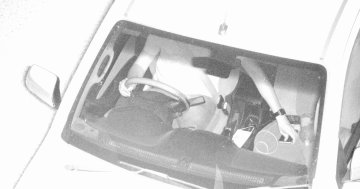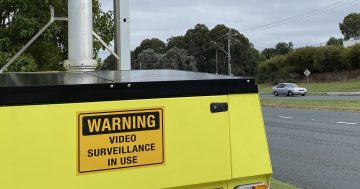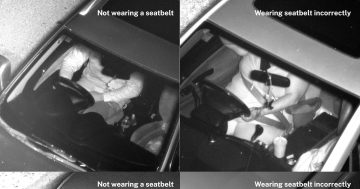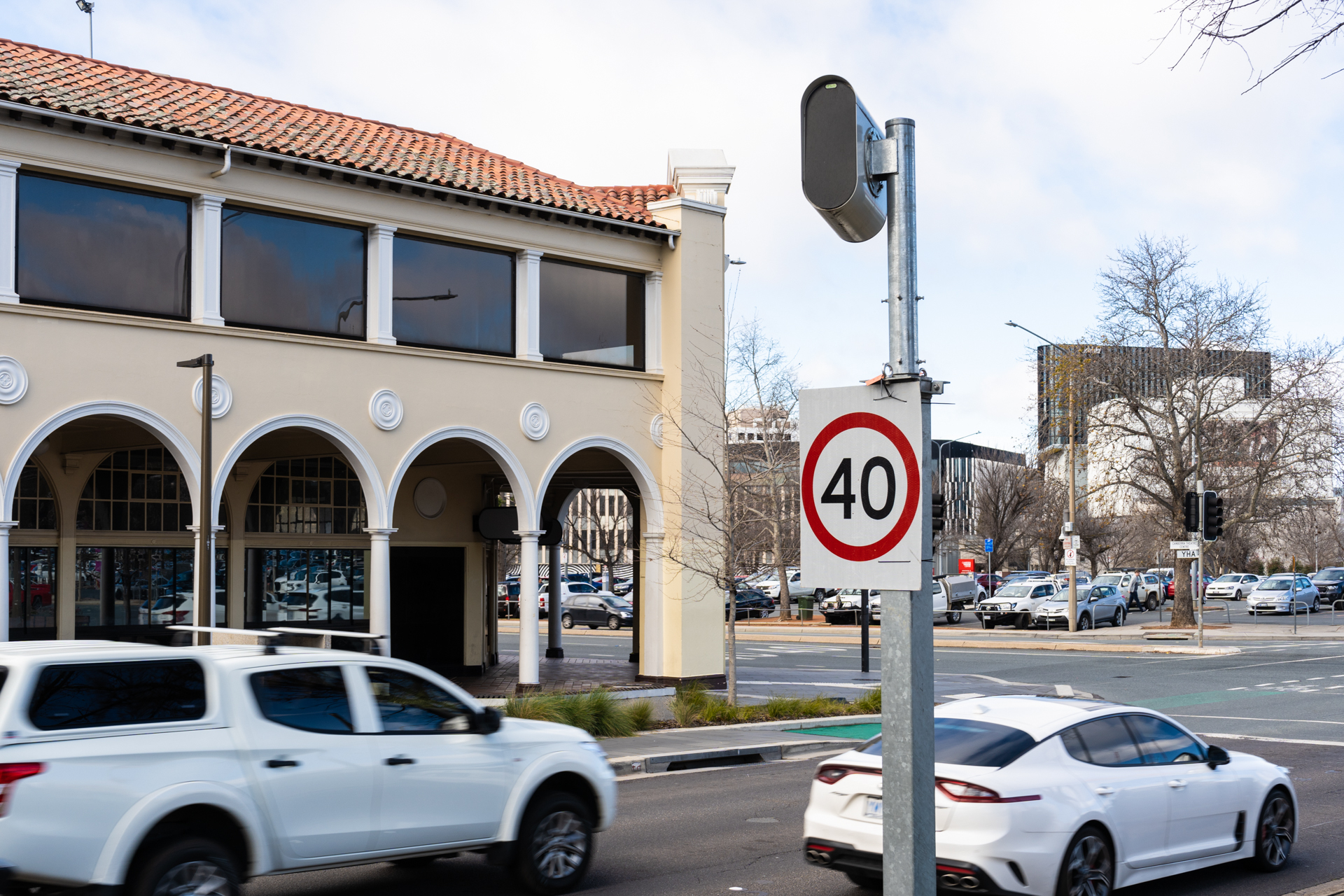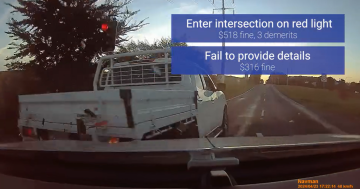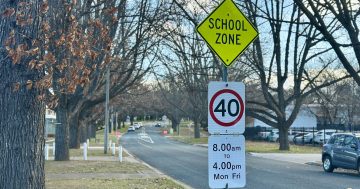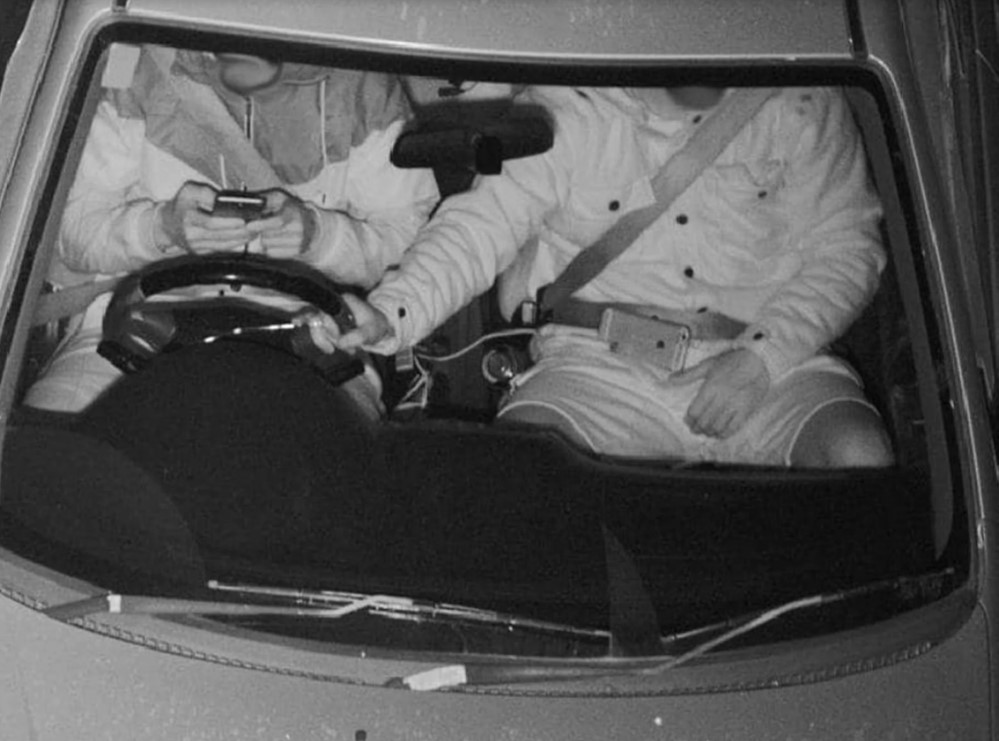
Gotcha! A driver caught by a mobile phone detection camera. Photo: NSW Police.
Mobile phone detection cameras will be rolled out in the ACT from February next year. Offenders will be hit with stiff fines and could be out of pocket up to $598, but they will only receive warning notices before infringement notices begin from October 2023.
The cameras are being installed in a bid to reduce driver distraction and accidents.
Two fixed cameras will be located on Hindmarsh Drive and Gungahlin Drive. Three mobile cameras will operate along three of Canberra’s busiest roads – Canberra Avenue, Tuggeranong Parkway and Yamba Drive – to maximise detection.
The rollout will be accompanied by an extensive education campaign across all platforms under the Get Your Hand Off banner.
The three-year contract with Acusensus Australia, which will supply and operate the cameras and analyse the photographs using artificial intelligence technology, will cost $9 million.
Transport and City Services Minister Chris Steel said drivers could be caught ‘anywhere, anytime’, and detectable devices would also include smartwatches.
He said 23 per cent of accidents were caused by driver distraction, and drivers using a mobile phone were 10 times more likely to be involved in an accident.
“Research shows that taking your eyes off the road for more than two seconds doubles the risk of a crash, with mobile phones too often being the source of that distraction,” Mr Steel said.
“A driver who looks at their phone for just two seconds while driving at 60 km/h travels 33 metres blind.”

In September 2020, NSW Police charged a 21-year-old driver being caught on a mobile phone detection camera allegedly snorting an unknown substance. Photo: NSW Police.
Mr Steel said that in the past five financial years, police issued an average of 911 infringements and 260 cautions for using a mobile device when driving.
“These new cameras, which will operate day and night in all weather conditions, will help ensure Canberrans understand that any time you take your eyes off the road to use your mobile phone while driving, you’re risking your own life and the lives of other road users,” he said.
“I strongly urge drivers to leave their mobile device alone when driving.”
Mr Steel said the cameras had made a big difference in NSW where the rate of offending went down dramatically.
The ACT would follow the NSW approach of a phase-in period with an education campaign and warning notices.
The Centre for Automotive Safety Research at the University of Adelaide advised the optimal locations for maximum road safety benefits of fixed and transportable cameras.
This included a review of ACT crash data to identify locations with a high prevalence of crashes or links to distraction.
Key stakeholders identified locations where vulnerable road users are at high risk, mobile device use is common and enforcement using existing police resources has been difficult.
The cameras will operate day and night in all weather conditions. Images detecting a potential offence will be automatically pixelated and cropped to only show a view of the driver. These will be reviewed by an artificial intelligence system, then a human operator before an infringement notice decision is issued.
A full range of security and privacy safeguards will be put in place governing the use and disclosure of the images. Any photos of non-offenders will be automatically deleted.
Acusensus already supplies this equipment to Queensland and NSW.
Original Article published by Ian Bushnell on Riotact.




